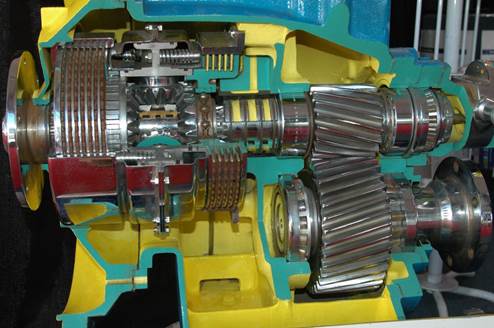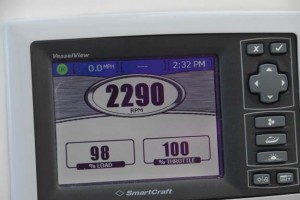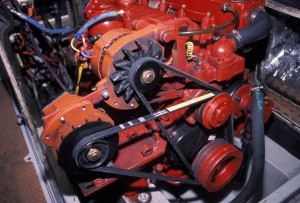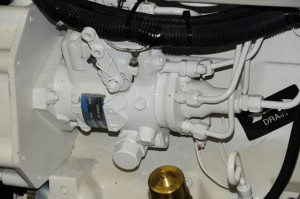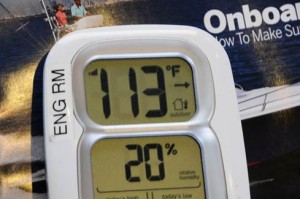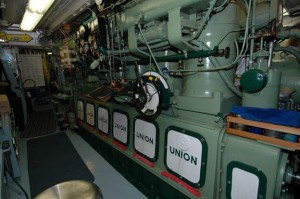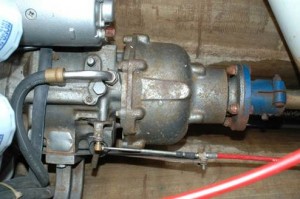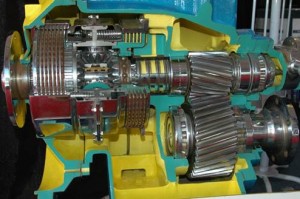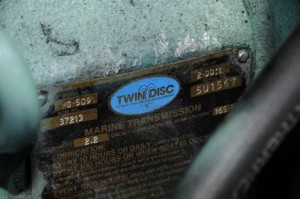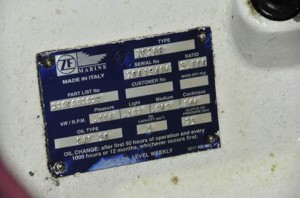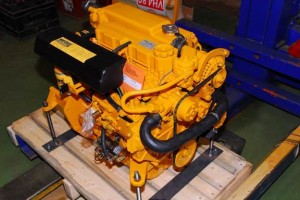Horsepower and Torque Explained
By Steve D’Antonio
Copyright October 2013
The relationship between horsepower, torque, rpm and gear reduction is clear. The affect this relationship has on a vessel’s performance and efficiency is, however, often less well understood.
Few discussions confuse, confound and mislead boat owners, builders, brokers and readers as much as that of horsepower and torque.
When distilled down to its most basic form, the explanation and differentiation between these two terms can be characterized thusly; horsepower is a measurement of work over a period of time, while torque is simply a measurement of force irrespective of the time over which it’s applied. Torque is an element of horsepower; however, it’s distinctly different. A firm understanding may enable you to better evaluate engine options for new vessels, as well as evaluating performance and fuel economy for a vessel you own or are contemplating purchasing. Familiarity with these definitions will also allow you to evaluate the level of expertise of professionals in the industry.
Horsepower History 101
Well over a dozen different types of horsepower measurement have been used since the term was first coined by James Watt, the developer of the “improved” steam engine, in 1782. He determined that ponies used to carry coal (or water) out of vertical mine could lift, via a rope and pulley, 22,000 foot-pounds of force per minute (more on what this means in a moment). The pony turned a mill wheel 144 times in one hour (2.4 times per minute). Watt also estimated that a pony could pull with a force of roughly 180 pounds. The wheel had a 12 foot radius, which meant the horse traveled 2.4 x 2π x 12 feet in one minute, which, using Watt’s formula of force multiplied by time divided by distance equaled 32,572 foot-pounds of force/minute, which was rounded to 33,000 ft lbf (pounds of force)/min or one horsepower.
Horsepower is often measured without an engine’s belt and gear driven accessories such as pumps and alternators. Depending on their size, and the size of the engine, these can have a noticeable change on ultimate power transmitted to the propeller.
Some say Watt carried out these calculations for ponies then increased the figures by 50%, assuming horses were that much stronger. There are competing stories involving brewery horses and other historically obscure individuals, however, one fact is clear, the unit of measure for horsepower, which involves a calculation of force over time, remains prevalent to this day.
The reason Watt went through the trouble of devising the horsepower calculation was profit-driven, he needed a way to calculate for his clients the amount of coal they would save by using his improved steam engine (improved over Newcomen’s steam power plant), his fee being based on a percentage of the coal not used by his customers after making the switch. However, the commission program wouldn’t work for mines that used horses rather than Newcomen’s steam engine and thus, the term horsepower was born. The inference being, for instance, a 20 horsepower steam engine would replace 20 horses, although it’s not likely the comparison was that empirical.
Other measures of horsepower have been proffered by other nations since Watts, including those abbreviated as ps (German), cv (Italian, French, Spanish and Portuguese), pk (Dutch) and ch (French) and others, all of which translate to horse power in English, with one significant twist, they represent metric horse power (MHP). The good news is, one PS, which stands for Pferdestärke or horse strength in German, Cv, pk etc. as well as all of the other metric horse power abbreviations are equivalent to .99 non-metric or imperial horse power, sometimes abbreviated as hp(I). Thus, there’s not much of a difference unless you are talking about really large ship or locomotive engines.
Occasionally, these suffixes may still be used on European and other foreign engines, however, with the adoption of European Union standards for member countries, all horse power must be rendered in Watts (hp may be provided as well) for engines produced or sold in those countries, coming full circle to Watts, or kilo-Watts or kW, which equals 1000 Watts. One horse power is equivalent to 746 Watts, or 0.746 kW. Therefore, a 100 hp(I) engine produces 74.6 kW.
In the last decade, new (to the marine market) fuel injection methods, high pressure common rail and electronic unit injection for instance, have had the single largest effect on an engine’s horsepower for a given displacement.
There’s HP and then there’s HP
That, however, is not the end of the horse power story. In addition to defining horse power, its form of measurement must also be defined, and there are several definitions, including drawbar horsepower (dbhp), used for measuring locomotive power plants, indicated horse power (ihp), a theoretical measurement of a perfectly efficient engine, brake horse power (bhp), used to measure an engine’s power without any accessories such as transmission, belts, water pumps, hydraulic power take off (PTO) pumps etc, and shaft horsepower (shp), which is a measurement of the power available at the transmission output coupling. For the most part, the latter two are most commonly used for measurement of marine engine “power”, although it’s important to understand that in both cases “accessories” such as the aforementioned alternators and pumps are not included in most engines’ hp ratings and none of them take into account drag induced by shafts, stuffing boxes or cutless bearings.
Although it varies, the friction losses imparted by the transmission are typically between 3% and 10%, with reduction gears and V drives leaning closer to the higher end of that range. Therefore, the difference between BHP and SHP is typically small, although losses imparted by add on equipment and running gear can be significant.
For instance, when belt and friction losses are taken into account, it’s not unusual for a high output alternator to absorb, at full output, as much as 10 hp. If it’s doing so while the engine is idling, then it’s worth considering that you may not have enough power for maneuvering or hydraulic thruster operation. Hydraulic PTOs can draw significantly more, enough to stop and engine cold if their gear is engaged while an engine is idling. This is why some vessels rely on smaller “pony” engines for hydraulic PTO use while at idle, or a PTO on each engine in twin screw installations.
In short, the unit or method of measurement of horsepower for a marine engine is less significant than the importance of comparing like measurements and units. If you are comparing engines or completed vessel’s engine, make certain you are also comparing BHP to BHP or kW to kW etc, and take into account add on accessories such as alternators and hydraulic systems.
Excessive engine room temperature, and specifically the temperature of the air the engine is ingesting, can have a significant impact on horsepower production.
Torque
Torque, as mentioned previously, is also a measure of energy, however, it has nothing to do with time; it could be imparted over one minute or one year. If horsepower is energy measured over time, torque could be thought of as the process for transforming or converting that energy into a useful motion, one that twists, like an axle or propeller shaft.
The definition of torque or the understanding thereof, can be a bit tricky. For illustrative purposes, let’s say it’s simply a force in pounds multiplied by distance. You’ve almost certainly demonstrated this yourself by using a longer wrench or an extension pipe slipped over a socket wrench (the “extension” is used in this case on the handle, it should not be confused with extensions used on the driven or socket end of the wrench) when removing a stubborn nut or bolt. The extension multiplies the torque applied to the fastener by virtue of the length or distance that the force is applied by your hand from the point where it’s applying twisting motion. Ten pounds of force applied to a one-foot long wrench imparts 10 pound-feet (it’s pound-feet in this case by the way, not foot-pounds, the latter represents work or an expenditure of energy) of torque, or 13.5 Newton meters/Nm in the metric system, while ten pounds of force applied to a two-foot long extension enables you to subject the fastener to 20 pound-feet of torque or 27 Newton meters. It’s one of those rare cases where Mother Nature seems to be offering up a free lunch.
Engine torque is measured using the following formula, (5,252 x hp) ÷ rpm. In order to get more power from an engine, and because horsepower is a measurement of power over time, it would seem then that one way to squeeze more of that power from an engine would be to make it turn faster. In fact, this approach works well and it’s why the small, light yet powerful engine on my Italian motor cycle spins up to 8,000 rpm, to develop more power from a smaller power plant package. That isn’t a free lunch, however, as turning engines at higher speeds comes with its own set of side effects, decreased longevity and increased cost of engineering.
Math-minded folks will have noticed in the above formula, however, that as rpm increases torque decreases, and there goes the free lunch, yet again. This is why traditional, large, slow turning diesels deliver mountains of torque. It’s why my Ford F-250 Powerstroke diesel can haul a 4,000 pound boat up a ramp at idle speed (with a little help from its reduction gears, I’ll get to that in moment) and why Westwind Tugboat Adventures’ vessel Union Jack is powered by a six cylinder, 400 hp engine that turns at 340 rpm and produces a whopping 6,180 pound-feet of torque. It’s a heavy slow turner, weighing in at 38,000 pounds.
Very large, slow-turning diesel engines like the one shown here, aboard the MV Union Jack, are capable of producing mountains of torque at relatively low horsepower.
By way of comparison, a modern, high speed 400 hp diesel may produce around 600 pound-feet of torque (measured at the engine’s crankshaft output) and weigh somewhere around 1000 pounds.
Does this mean that if you want torque, which is what really turns the prop, then you must have a large, heavy diesel? The short answer is no, because while Mother Nature can’t be fooled, she can be cheated. What if we could keep the engine rpm high, to maintain horsepower, while slowing down the shaft/prop rpm in order to coax more torque out of the equation? In fact, this is done regularly by using a component known as a reduction gear, which is bolted to and often appears to be part of the transmission. Reduction gears do just that, reduce rpm at the shaft using gears, somewhat like the transmission in the Ford F-250 mentioned above, while allowing the engine to continue to turn at higher rpm.
Reduction gears are tantamount to adding a cheater bar to a socket wrench, enabling a high speed engine’s rpm to be converted to additional torque. In this example, the reduction gear is the bell-shaped device, on the right, bolted to the output side of this transmission.
As is often the case, there’s no free lunch when it comes to gears. A reduction gear, the stacked beveled gear set on the right in this demonstration cut-away transmission, offers increased torque while reducing rpm. The price paid is added friction and a resultant slight loss in efficiency.
For example, a 150 hp engine that turns at 4000 rpm produces 197 pound-feet of torque. Not bad for a small, light, high speed diesel engine. However, with a 2:1 reduction gear installed, the shaft rpm will be reduced to 2000 rpm, making the torque available to the propeller 394 pound-feet, a significant increase.
Most transmissions are offered with a reduction gear ratio. For every revolution of the engine, the output shaft of the transmission turns at a fraction of that rpm. Top: This reduction gear offers a 2:1 reduction ratio, for every two revolutions of the engine; the propeller will complete one revolution. A low reduction of this sort will often be found on a relatively slow turning diesel. Bottom: This transmission offers a deeper reduction of 3:1, and it would likely be used on a moderately high speed diesel.
There are tradeoffs for the reduction gear and rules that must be followed, however, I’ll save discussion of those for another column. In general, however, the price paid for this gear magic is two-fold. First, there’s the inefficiency and friction induced by the reduction gear, which may account for a 3-5% “loss”. Second, the reduction gear adds weight, complexity and expense to the installation. In the end, however, it’s a net gain and one that many engine manufacturers and boat builders embrace, and it’s why smaller, lighter high speed diesels have become popular.
Higher rpm designs have enabled engine manufacturers to offer more horsepower in a smaller footprint, an attractive combination for many boat builders, both power and sail. As a result, repower projects like the one shown here often result in a smaller engine for the same output, or greater output for the same size engine as the one that previously powered the vessel.
Because of their compact size, high speed diesels now dominate some markets, particularly sail, sport fish and performance-oriented, planing power boats.
While heavy, slow turning diesel engines are desirable in many ways, among other things they often last a very long time, they also have drawbacks and as such the higher speed engine and reduction gear combination simply makes good sense in many, but not all, applications.
When comparing engines and power output ensure like units and measurement methods are being used and remember, it’s not about horsepower alone.
For more information on the services provided by Steve D’Antonio Marine Consulting, Inc. please e mail Steve at info@stevedmarineconsulting.com
or call 804-776-0981

